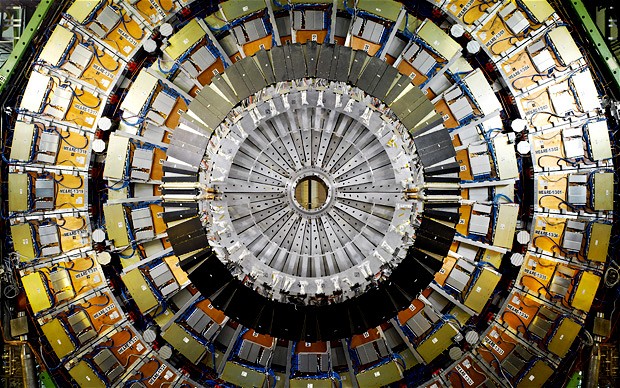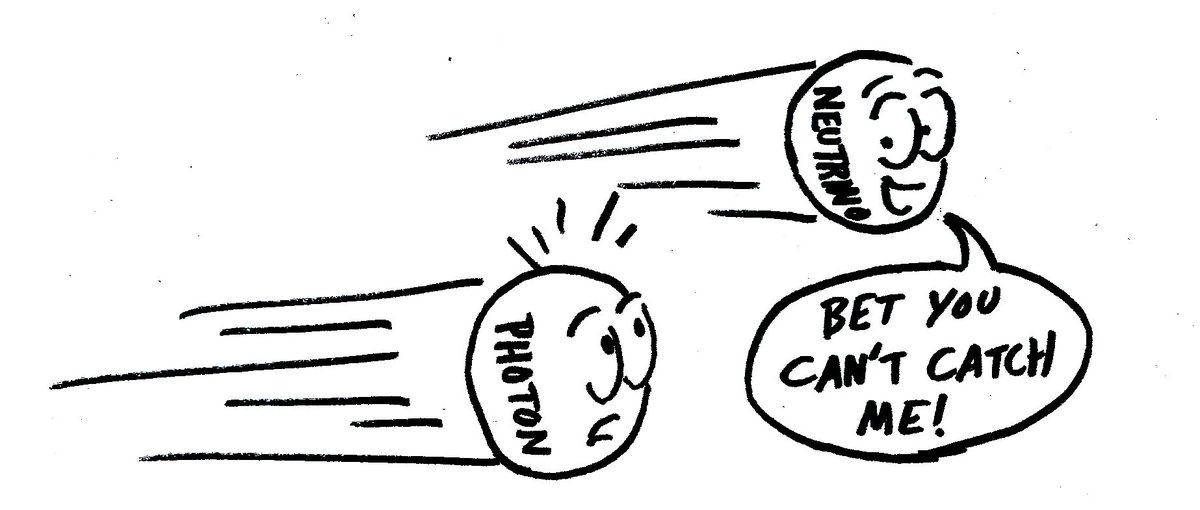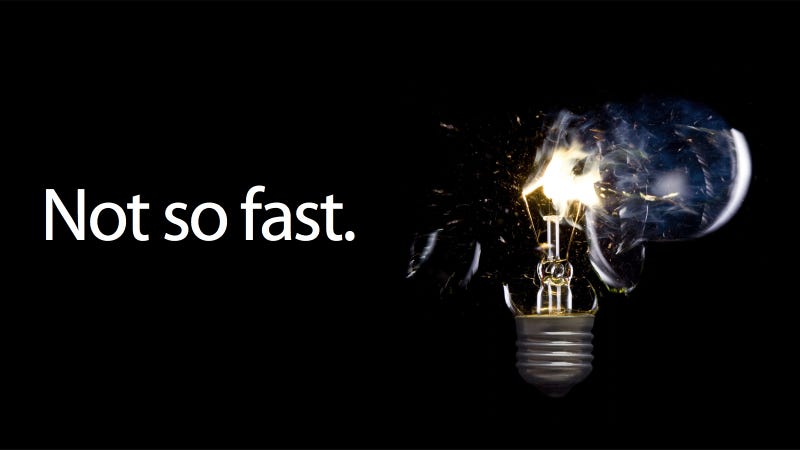
“We have high confidence in our results. We have checked and rechecked for anything that could have distorted our measurements but we found nothing," he said. "We now want colleagues to check them independently.”

A total of 15,000 beams of neutrinos - tiny particles that pervade the cosmos - were fired over a period of three years from CERN towards Gran Sasso 730 (500 miles) km away, where they were picked up by giant detectors. Light would have covered the distance in around 2.4 thousandths of a second, but the neutrinos took 60 nanoseconds - or 60 billionths of a second - less than light beams would have taken.
“It is a tiny difference,” said Ereditato, who also works at Berne University in Switzerland, “but conceptually it is incredibly important. The finding is so startling that, for the moment, everybody should be very prudent.”

Ereditato declined to speculate on what it might mean if other physicists, who will be officially informed of the discovery at a meeting in CERN on Friday, found that OPERA's measurements were correct.
“I just don't want to think of the implications,” he said. “We are scientists and work with what we know.”Much science-fiction literature is based on the idea that, if the light-speed barrier can be overcome, time travel might theoretically become possible. The existence of the neutrino, an elementary sub-atomic particle with a tiny amount of mass created in radioactive decay or in nuclear reactions such as those in the Sun, was first confirmed in 1934, but it still mystifies researchers.
It can pass through most matter undetected, even over long distances, and without being affected. Millions pass through the human body every day, scientists say. To reach Gran Sasso, the neutrinos pushed out from a special installation at CERN - also home to the Large Hadron Collider probing the origins of the universe - have to pass through water, air and rock.

The underground Italian laboratory, some 120 km (75 miles) to the south of Rome, is the largest of its type in the world for particle physics and cosmic research. Around 750 scientists from 22 different countries work there, attracted by the possibility of staging experiments in its three massive halls, protected from cosmic rays by some 1,400 metres (4,200 feet) of rock overhead.
Scientists say they have clocked neutrinos – tiny particles smaller than atoms – travelling at 300,006 kilometres per second, slightly faster than the speed of light.
What does that mean?
Einstein's theory of special relativity says nothing can travel faster than the speed of light in a vacuum, because photons – light particles – have no mass. Proof that neutrinos, mysterious subatomic particles which have a tiny amount of mass, can travel faster would be inconsistent with Einstein's theory.
What are the knock-on effects?
Einstein's theory is critical to the Standard Model of physics that helps explain everything we know about how the universe works, from black holes to the big bang. If it is shown to be flawed, virtually everything in modern physics and the fundamental laws of nature would have to be rethought.
Have the results been proven?
The findings were such a shock that CERN's scientists spent months checking their data before making their announcement. But they have asked American and Japanese teams to confirm the results before they are declared an actual discovery. The data will also be put online overnight so that it can be scrutinised by experts across the world.
The theory of special relativity was used to spawn the theory that energy is equal to mass multiplied by the speed of light squared. It is premature to discount the most famous equation of all time, but the latest discovery suggests one key assumption it relies on – that nothing can accelerate faster than light – may not be wholly accurate.


8 comments:
Albert Einstein's theory of special relativity which says that the speed of light is a "cosmic constant" and that nothing in the universe can travel faster is based on established facts bound by the limitations of the natural world. The "firing" of neutrinos from CERN towards Gran Sasso is not a natural event. It neither proves nor disproves Einstein's theory.
My moms are both very smart But one of my moms is a theoretical physicist and my Auntie is too. they both came up with a solution to dark matter. They were reading about the creation of stars and the light they create. Well, within the light just before it illuminated dark matter is released in a uniform and magnetic pulse. (their words not mine) I am just not that smart. But in addition to their findings they said the star also creates anti magnetic forces and magnetic monopoles all in one 1 hundredth of a nano second. The experiment they formulated worked with an ordinary light bulb. They also said size or mass has a very different effect on this experiment. They with a star it might even be faster than with the ordinary light bulb... 8-)
In fact, every subatomic particle is faster then the speed of light, because it can be at 2 places at the same time. (according to Quantum theory).
name tags
This is what happens when we worship Einstein due to years of propaganda, instead of just trusting in the scientific method
how did they "time" it?
A similar result was seen around 2012, tracked down to a timing error.
Einstein is ok in his understanding about the Universe. ❄️Wisdom- is fastest phenomenon in the universe. Only Wisdom- can penetrate into the universe within neutron and can gives perfect designs with greater precisions. I have the detailed works of the sane with six subatomic particles with extra combination impacts. Book of Wisdom- 7:22-30
Post a Comment